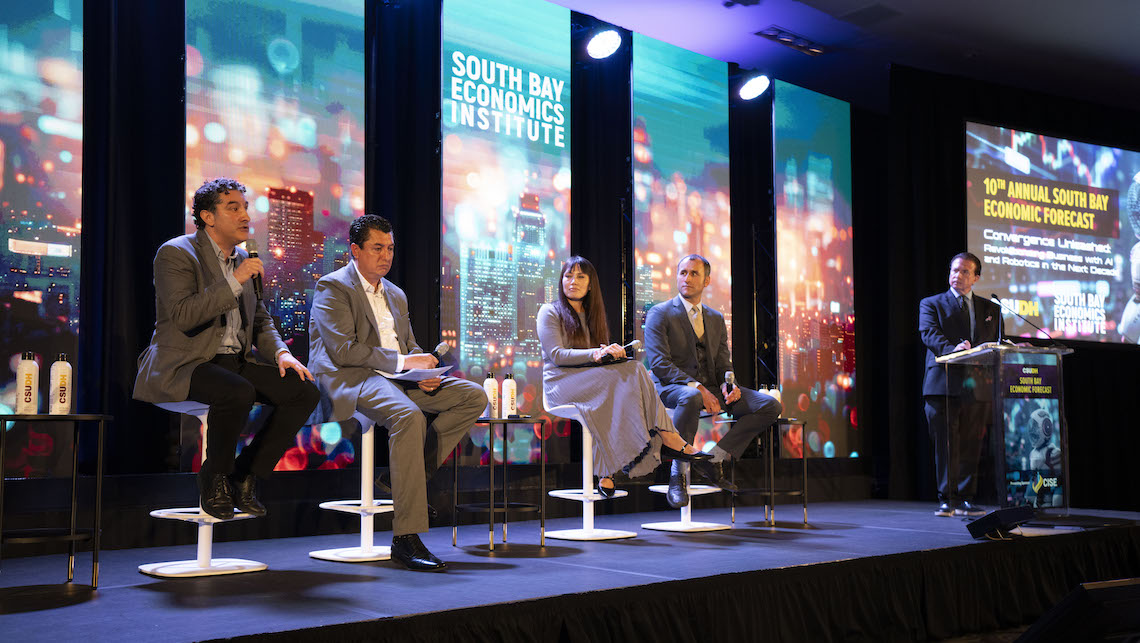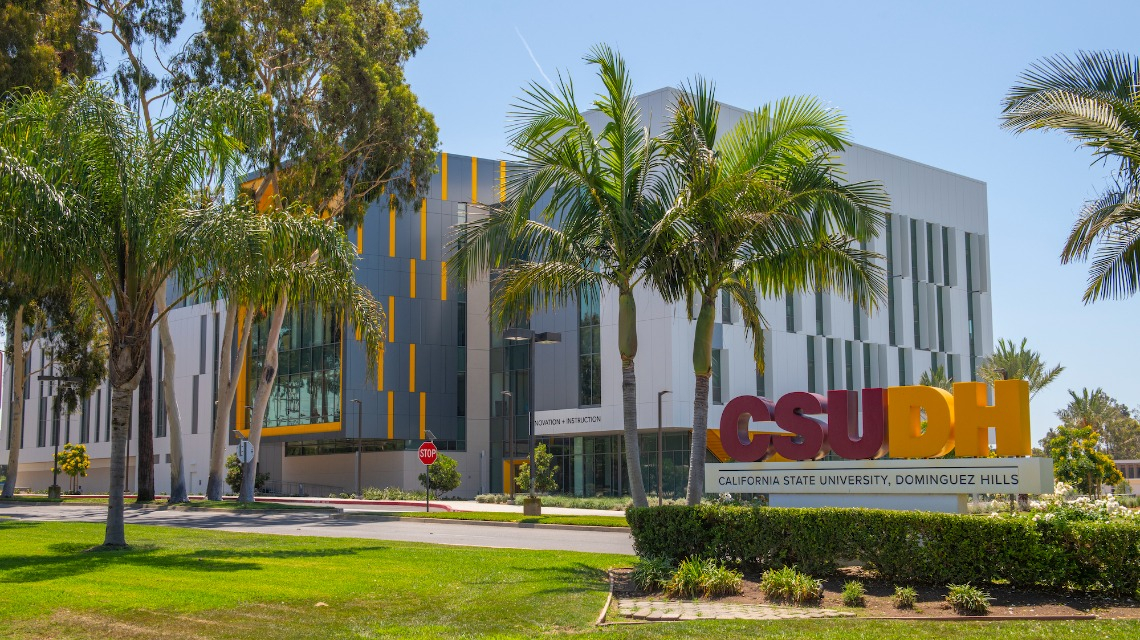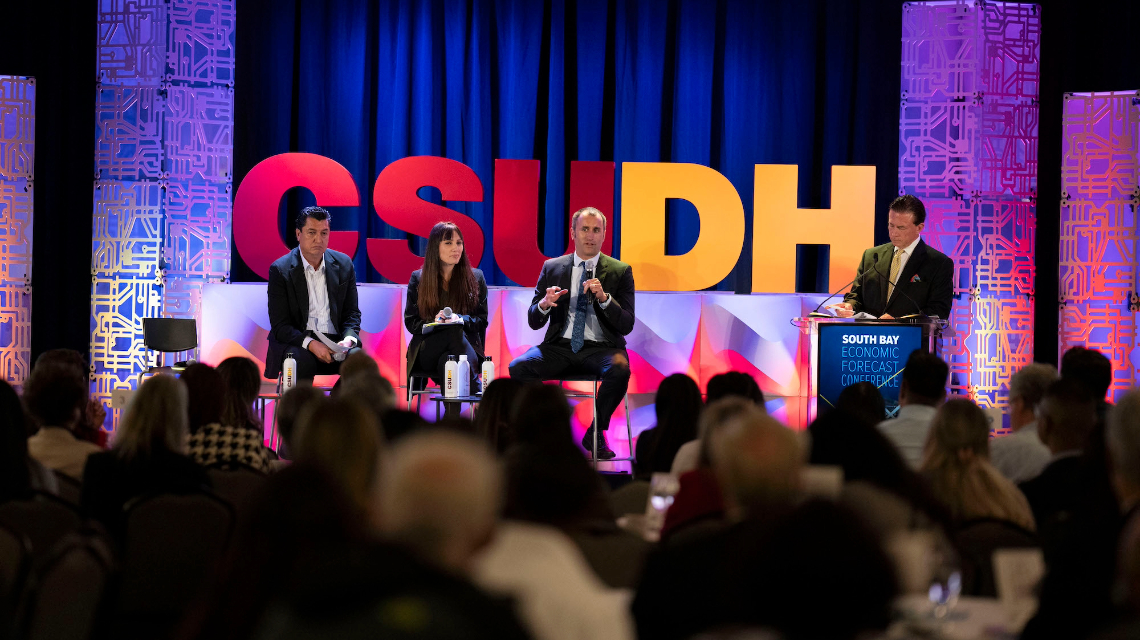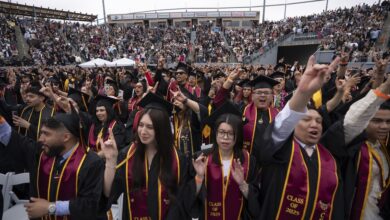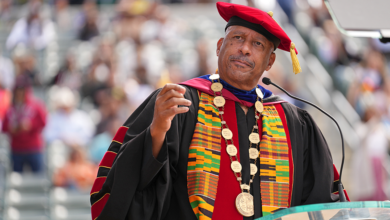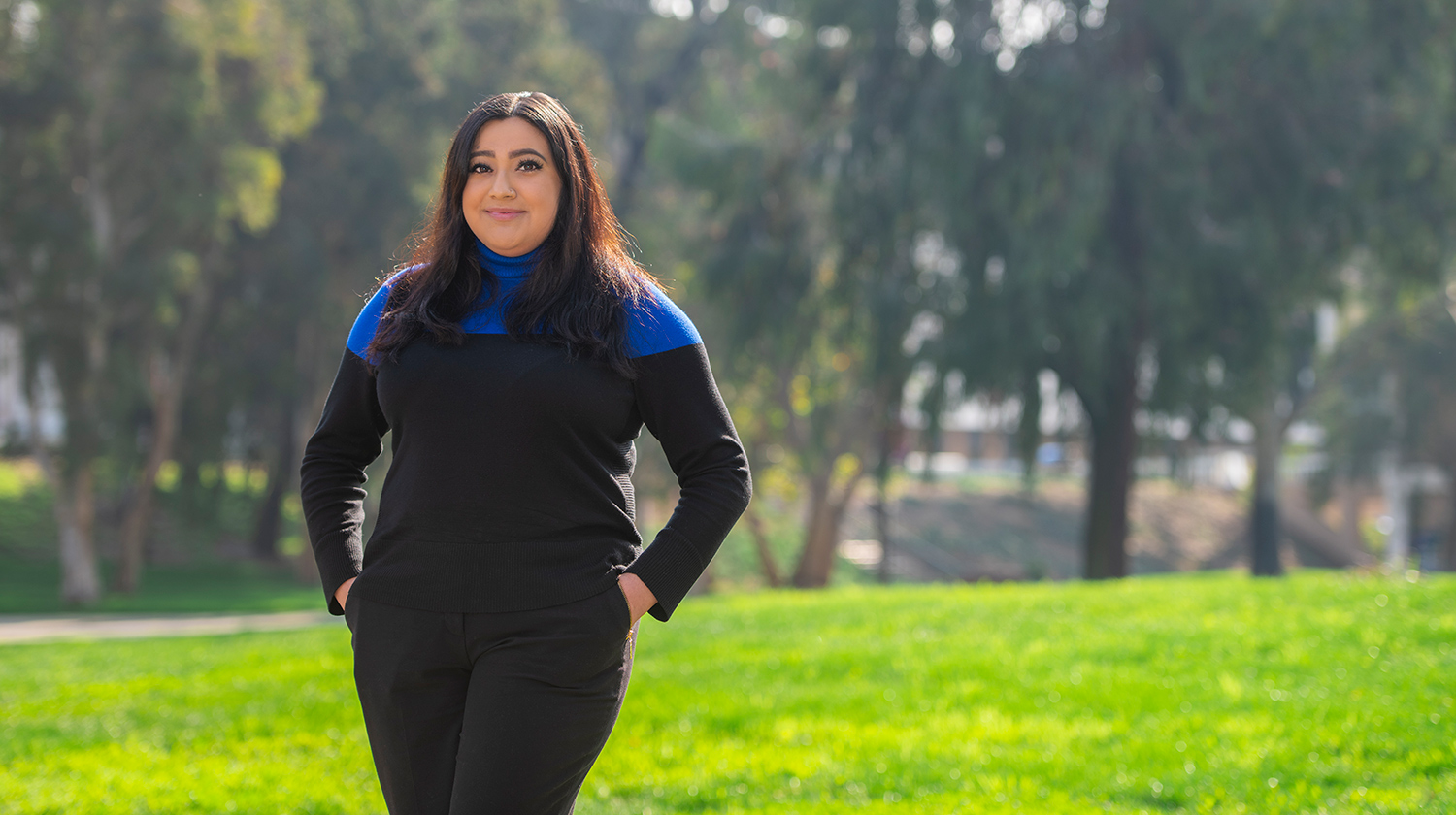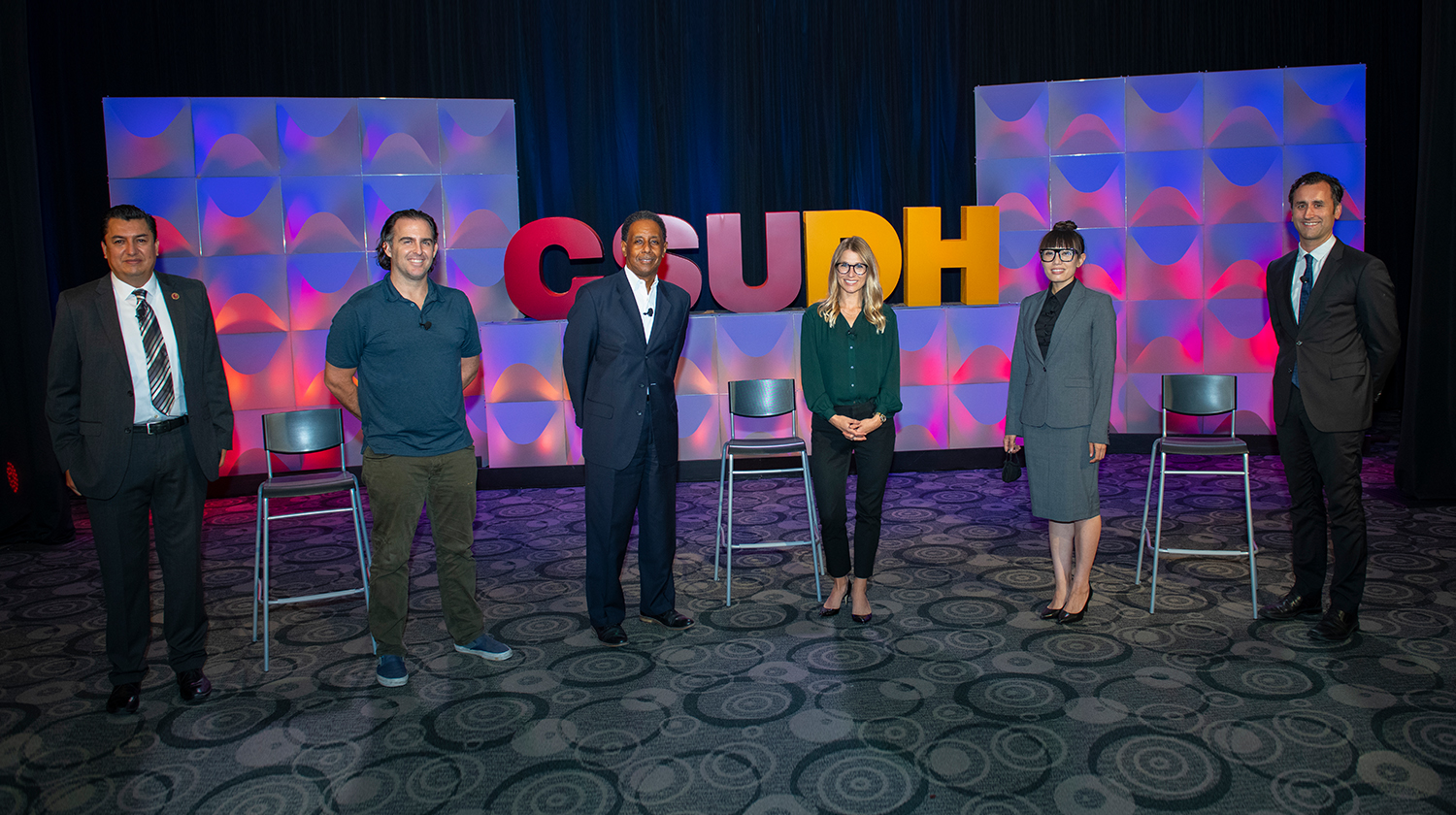
While the South Bay and Los Angeles economies have taken massive hits since the onset of the pandemic in the U.S., researchers in the South Bay Economics Institute expect Gross Domestic Product (GDP) to reach pre-COVID-19 levels by mid-2021, and employment to follow suit the following year.
This was one of the many economic projections presented in the 2020 South Bay Economic Forecast report, which California State University, Dominguez Hills (CSUDH) released on Oct. 1 as part of its South Bay Economic Forecast conference.
The sixth annual conference was titled “Adopting to Change: Surviving and Thriving During Disruption,” and hosted on campus for a virtual audience of guests representing cities and businesses throughout the region. The university’s South Bay Economics Institute (SBEI) produced the forecast report, which this year is framed around the COVID-19 outbreak, lockdown, and the resulting recession.
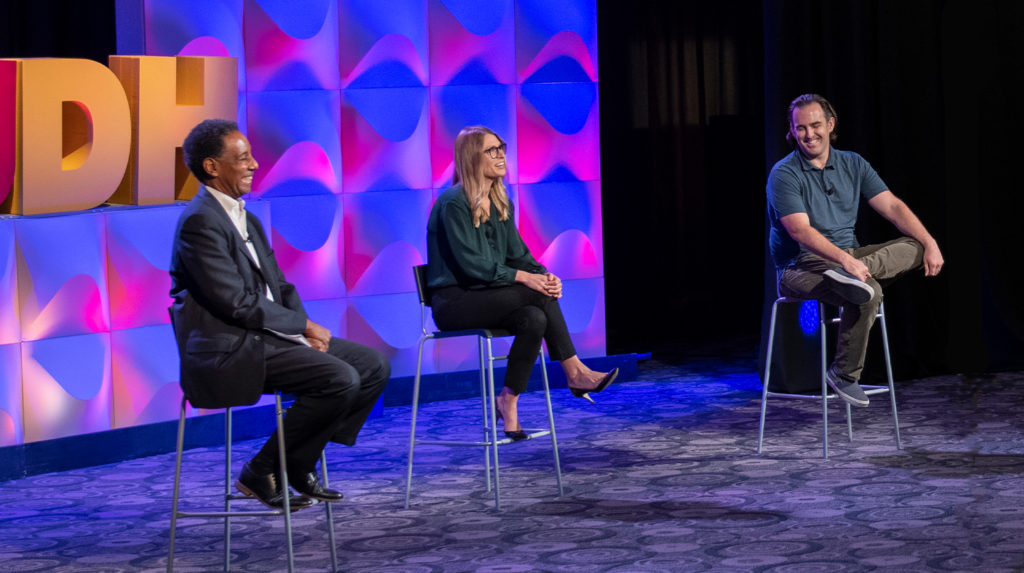
The SBEI is made up of CSUDH faculty members: Assistant Professor of Finance Jennifer Brodmann, Assistant Professor of Public Administration Fynnwin Prager, and Professor of Economics Jose Martinez.
This year’s conference was organized into two panel discussions focused on the regional economy and how local businesses are adapting to change, with participants fielding questions from host Frank Mottek, anchor for KNX 1070 NEWSRADIO.
South Bay Economic Forecast Report
During the conference, SBEI faculty discussed several key topics, including the largest changes in the economy, accelerating economic trends, and who has been the most impacted due to the lockdown.
The SBEI found sobering national economic data. Between the first and second quarter in 2020, the GDP declined from -5 percent to a staggering -32.9 percent. Previous major economic shocks have paled in comparison, such as the peak 2008 fourth-quarter decline of -8.4 percent.
However, according to the SBEI’s report, the home-based economy has made substantial gains, with 45 to 56 percent of the workforce working from home (up from 5 to 15 percent). E-commerce has soared this year, up by $77 billion from March to June. There has also been increased spending on groceries, household supplies, and home entertainment.
“Obviously, on a macro scale, we’ve seen significant impacts to GDP, the likes of which in a single quarter we have not seen since The Great Depression,” said Prager. “It has impacted the entire economy regardless of which state we’re in. Things have bounded back a little bit, which is good news.”
To review and download the South Bay Economic Forecast Report visit https://www.csudh.edu/uce/economic-forecast/
Unemployment climbed exponentially this year from 3.5 percent in February, to 13.3 percent in May, before experiencing a drop to 11.1 percent in June.
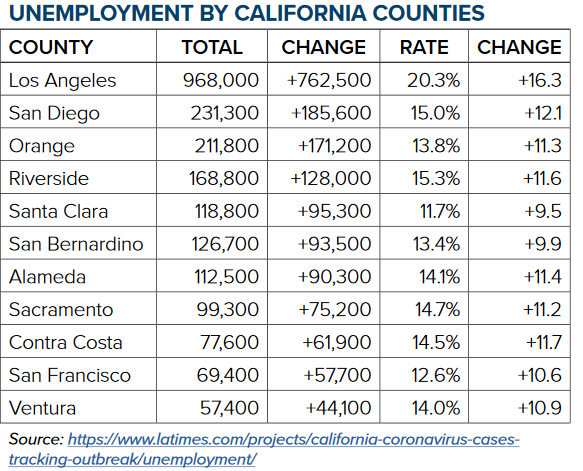 “Employment in the South Bay and Los Angeles has suffered. We have all felt that. It has been worse than the previous recession of 2008-2009, so that has had a big impact in this area,” said Martinez. “Different sectors of the economy are recovering at different speeds, but we expect most sectors to recover next year.”
“Employment in the South Bay and Los Angeles has suffered. We have all felt that. It has been worse than the previous recession of 2008-2009, so that has had a big impact in this area,” said Martinez. “Different sectors of the economy are recovering at different speeds, but we expect most sectors to recover next year.”
Most Impacted
COVID-19 has impacted businesses and industry in a variety of ways. According to the SBEI’s report, the most impacted sectors in the Los Angeles region include sales, hospitality, healthcare, community and social services, and personal care. Those with the greatest negative impact due to the lockdown include hair and nail salons, gyms, movie theaters, restaurants, music and theatre venues, and the event industry.
“Those providing more essential goods, such as grocery stores, deliveries, and those that are already in cloud-based technologies have had a huge boost to their performance,” said Brodmann. “But we have seen drastic hits to hospitality and event spaces…anything that features indoor activities has had to shift to more outdoor accommodations, such as restaurants, and we have seen a shift to more delivery pickups both in the retail and hospitality sectors.”
South Bay Resiliency
The South Bay benefits from its economic and workforce diversity. Its industrial sectors have the flexibility to recover more quickly, especially as high-tech Silicon Beach and biotech sectors continue to grow, and its workforce is demographically and educationally prepared to help aid recovery.
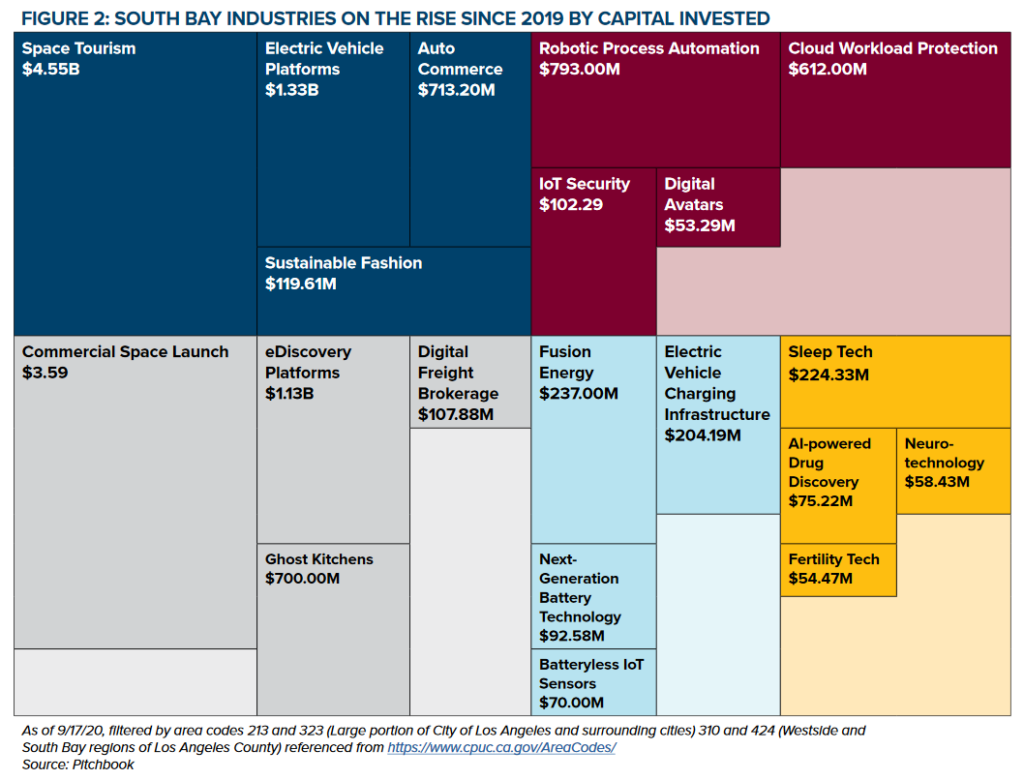 The cities of the South Bay have also fared better with the virus compared to national hotspots. The region’s deaths per 100,000 population is 25.6 deaths, compared to the Unites States’ 47.9.
The cities of the South Bay have also fared better with the virus compared to national hotspots. The region’s deaths per 100,000 population is 25.6 deaths, compared to the Unites States’ 47.9.
Innovations and opportunities have also presented themselves during the pandemic. Many companies in the South Bay and L.A. County have demonstrated an ability to adapt with a self-reliant supply chain. Others have adapted to shifts in demands for such products as personal protective equipment (PPE), lab testing, and the rise in demand for home delivery and e-commerce.
As the COVID-19 pandemic continues, the “new normal” will consist of many more businesses not being able to function as before, especially hospitality, tourism, gyms, healthcare, and education. Even with adaptations, up to 10 percent of economic recovery is predicted to be put on hold.
Fortunately, the L.A. area is remarkably diverse, and the South Bay even more so, says Martinez. “We are confident that overall, though we are dealing with this pandemic that is hurting a lot of sectors, we’re going to do fine and find a way to innovate and move on through this pandemic,” he said. “While some businesses are unfortunately closing, others are opening. Those are the signs you want to see.”

